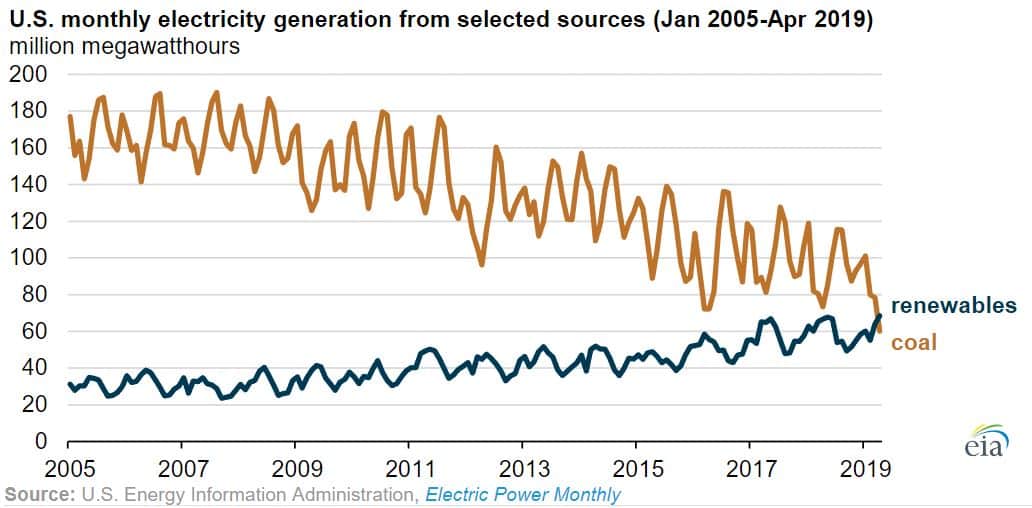In April 2019, U.S. monthly electricity generation from renewable sources exceeded coal-fired generation for the first time based on data in EIA’s Electric Power Monthly. Renewables, which include utility-scale hydropower, wind, solar, geothermal, and biomass, provided 23 percent of the total electricity generation while coal provided 20.
According to the agency, the milestone was helped by seasonal factors but is also the result of a long-term trend of declining coal generation and growing renewables.
In the United States, overall electricity consumption is often lowest in the spring and fall months because temperatures are more moderate and electricity demand for heating and air conditioning is relatively low. As a result, generation from fuels such as natural gas, nuclear and coal is often at its lowest point in these months. On top of that, wind generation reached a record monthly high in April of 30.2 million megawatthours, while seasonal increases in hydroelectric generation also helped drive the overall increase in renewable generation.
The long-term trend, however, is the more interesting part of the story. U.S. coal generation peaked a decade ago and has been on a steady decline. According to the agency, since the beginning of 2015, about 47 Gigawatts of U.S. coal-fired capacity has retired, and virtually no new coal capacity has come online. The EIA expects another 4.1 gigawatts to retire this year, which represents more than half of all anticipated power plant retirements for 2019.







